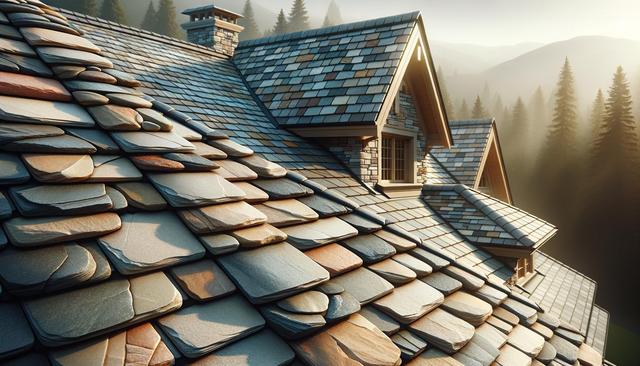What Is Stone Shingle Roofing?
Stone shingle roofing is a specialized type of roofing that incorporates a steel base layered with stone chips to mimic the look of traditional shingles. This combination offers a blend of visual appeal and performance benefits. The stone coating is bonded to the shingles using an acrylic film, ensuring durability and weather resistance. These shingles are designed to replicate the aesthetic of natural materials like slate or wood, while offering the resilience of modern engineering. Homeowners often choose stone shingle roofing for its unique appearance and long service life.
Unlike organic or asphalt-based shingles, stone-coated options resist common problems such as cracking, curling, and warping. Their interlocking design enhances wind resistance, making them suitable for regions with frequent storms or high gusts. While their installation process may resemble that of traditional shingles, the added weight and structure require more consideration during planning.
Key Benefits of Stone Shingle Roofing
One of the most attractive aspects of stone shingle roofing is its combination of visual charm and practical advantages. These shingles are engineered to endure decades of exposure to the elements, often with warranties that extend 40 years or more.
Here are several notable benefits:
- Durability: Stone-coated shingles are resistant to fire, wind, and hail.
- Low Maintenance: Unlike organic materials, they do not require frequent repairs.
- Energy Efficiency: Reflective coatings can help reduce heat absorption.
- Longevity: With proper installation, they can last significantly longer than standard shingle materials.
- Variety: Available in various colors and textures to match different architectural styles.
In addition to physical resilience, stone shingles also offer acoustic benefits. The stone layer dampens rain and wind noise, which can be valuable in urban or high-wind environments.
Considerations Before Installation
Despite their advantages, stone shingle roofing is not suitable for every structure. Due to their weight—typically heavier than asphalt shingles but lighter than slate—it’s crucial to assess the load-bearing capacity of the building’s frame. A roofing contractor or structural engineer should evaluate the existing structure prior to installation.
Other important considerations include:
- Climate: Ideal for areas with varied weather patterns, but may not be the best fit in consistently hot regions without reflective coatings.
- Cost: Initial expenses can be higher than standard roofing materials, though offset by lower maintenance and longer lifespan.
- Building Codes: Local regulations may impact installation methods or materials used.
Additionally, roofs with complex designs or steep slopes may require custom fitting or additional labor, potentially affecting the overall cost and project timeline.
Installation Process and Timeline
Installing stone shingle roofing requires precision and expertise. The process begins with the removal of old roofing material, followed by inspection and repair of the underlying deck. Once the surface is prepared, a waterproof underlayment is applied to provide an extra layer of moisture protection.
The shingles are then installed in an interlocking pattern to enhance wind resistance and structural integrity. Each tile is secured with fasteners designed to resist corrosion and uplift. Proper sealing at the edges, valleys, and vents is essential to prevent leaks.
Depending on the size and complexity of the roof, installation typically takes between one to two weeks. Factors that may affect this timeline include:
- Weather conditions
- Roof accessibility
- Complexity of design
- Availability of materials
It is highly recommended to hire certified professionals familiar with stone-coated systems to ensure proper installation and warranty compliance.
Maintenance and Longevity
One of the key reasons homeowners invest in stone shingle roofing is the minimal maintenance it requires over its lifespan. Routine inspections, typically once a year, are usually sufficient to ensure the roof remains in good condition. These inspections should focus on checking for loose tiles, sealant deterioration, and debris accumulation.
Cleaning stone-coated shingles is relatively straightforward. Using a soft brush or low-pressure water spray can remove accumulated dirt or organic materials like moss. Avoid harsh chemicals or power washing, as these can damage the stone coating.
Additionally, homeowners should:
- Keep gutters clean to prevent water backup
- Trim overhanging branches to reduce debris
- Repair minor damage promptly to prevent larger issues
With proper care, stone shingle roofing can maintain its appearance and function for several decades, making it a noteworthy option for those seeking a long-term solution for their roofing needs.
Conclusion: Is Stone Shingle Roofing Right for You?
Stone shingle roofing offers a compelling blend of aesthetic appeal, structural integrity, and long-term value. For homeowners seeking a roof that can withstand diverse weather conditions while enhancing curb appeal, this option is worthy of consideration. It’s particularly suitable for those planning a long-term stay in their home or looking to invest in a durable, low-maintenance roofing solution.
However, it’s essential to weigh factors such as cost, local climate, and structural compatibility before proceeding. Working with experienced professionals ensures the roofing system is installed correctly and performs as intended. With thoughtful planning and regular care, stone shingle roofing can be a reliable and attractive component of your home for many years to come.


